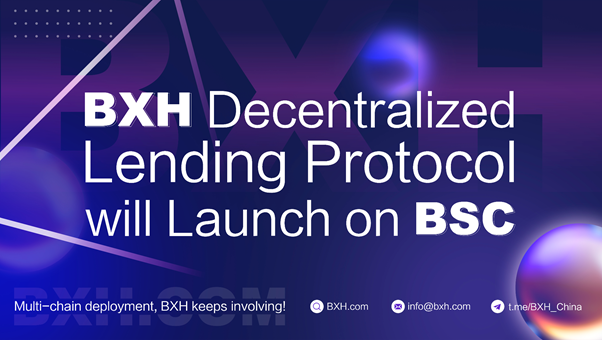Reason to trust

How Our News is Made
Strict editorial policy that focuses on accuracy, relevance, and impartiality
Ad discliamer
Morbi pretium leo et nisl aliquam mollis. Quisque arcu lorem, ultricies quis pellentesque nec, ullamcorper eu odio.
As one of the biggest highlights of this year, DeFi has fostered many new businesses.
Judging from the status quo of DeFi projects such as lending, financial management, and trading, it has indeed met the real needs of many investors and boosted the data on the chain. TVL (Total Value Locked), as the core indicator of the DeFi sector development, reflects the current market investors’ demand for DeFi business and the total capital scale of the industry.
In benchmarking the traditional financial industry, the basic business of a bank is lending, which can greatly enhance the utilization rate of funds, which also contributes to the huge market value of the bank. From this perspective, DeFi lending products are bound to become one of the major infrastructures of the decentralized finance sector.
Facing the huge decentralized lending market, focusing on capturing the unmet needs of users, on October 15th, BXH announced that its decentralized lending protocol officially lands on the Binance Smart Chain BSC, simultaneously opening initial mining.
The BXH decentralized lending protocol is a smart contract-based lending project and an upgraded version of the Compound protocol, providing staked lending for multiple chains. It is an important part of the BXH one-stop DeFi composite ecosystem and brings innovative revenue models to investors. Also, it brings new value capture to the BXH token and has the potential to benchmark the basic business of traditional financial banks. It is expected to become a growth engine for BXH in the next stage, pushing up currency prices once again.
In fact, since BXH transformed and upgraded to a one-stop DeFi composite ecological platform integrating DEX, smart vaults, aggregated revenue, lending, leverage, cross-chain, casting, incubation, etc. in September, it has continuously improved its functions and user experience. The decentralized lending protocol launched this time is an important deployment of BXH, and it is also the cornerstone of its commitment to provide users with a new world of DeFi finance with low barriers to participation, convenient operation, stable income, openness, fairness, and open source security.
01. Next Generation “DeFi Bank”
The BXH decentralized lending protocol implements a mechanism of “demand loan with no fixed terms, and interest rates are automatically calculated according to algorithms”.
Tokens applicable to initial deposit & lending and borrowing-USDT, USDC, BUSD, BTCB, ETH, WBNB
Users can stake their digital assets in the BXH fund pool, lending or borrowing according to their own needs. The asset lender can obtain a certain annualized income, and the asset borrower needs to pay a certain interest.
As a depositor, select the corresponding token in the [Deposit Market] to authorize the deposit; after completing the deposit authorization, start staking in [My Deposit] to earn interest.
Interest rate model: deposit interest rate = base interest rate + subsidized interest rate on deposits + utilization rate * utilization rate multiplier
In short, the higher the utilization rate of funds deposited by depositors, the higher the return. From the perspective of the product mechanism, the interest-earning process is flexible. While minimizing user operations and lowering the threshold for user participation, it also maximizes the user’s rate of return and meets the demands of stable users to participate in the DeFi market.
As a borrower, if you need to borrow, you need to complete the deposit staking before you can proceed with the loan authorization; after completing loan authorization, you can select the corresponding token in the [Loan market]; according to the deposit token, staking rate, and maximum secured loan amount, each token has a maximum credit line; check my loan in [My Loan] and click Repay to repay.
Interest rate model: Loan interest rate = base interest rate + utilization rate * utilization rate multiplier + margin interest rate * margin interest rate multiplier
In addition to the lending and repayment of funds, staking assets to participate in mining without impermanent loss is another core competitiveness of the BXH decentralized lending protocol. It revitalizes the “dead” assets in the wallet and makes it flow into various DeFi projects to innovatively help users gain greater benefits per unit of time, bringing with the best experience
BXH mining without impermanent loss combines a single-currency staking aggregated income + high-frequency repositioning mechanism to reduce impermanent losses. It is a DeFi mining model integrating high yield, low risk, and easy operation. It has the following characteristics:
One-click deposit of a single currency can generate income. Flexible deposit and withdrawal. Extremely low staking risk. Simple operation. No need to consider the loss of principal.
Stake lenders only need to undertake the gas fees for staking and withdrawal, and do not need to spend a lot of energy to search, compare, find, and discriminate high-yield pools. Under the mobilization of intelligent mining (AI Earn) and portfolio hedging strategies, for different deposit currencies, the platform price-feeding robot will catch the price fluctuation in time, find the pool with the highest mining revenue for that currency, and automatically adjust positioning at high frequency to participate in different LP mining.
From an operational point of view, stake lenders only need to deposit or borrow one asset to participate in mining without impermanent loss and automatic reinvestment, regardless of asset allocation, asset price fluctuations, impermanent losses, profit strategies and other issues.
As the next-generation lending protocol, the incentive direction of BXH decentralized lending is consistent with the project’s ecological growth goals. Through this model, users not only meet their own lending demands, but also can obtain token rewards, and the platform has thus obtained sufficient liquidity.
Therefore, the commercial value of the BXH decentralized lending protocol will be discovered in the continuous rising borrowed assets and BXH tokens market value.
02. Safe and legal, Operate stably
Since DeFi products operate on the blockchain network, all product codes are open source and anyone can view the specific content of the DeFi product you use in the blockchain browser. Therefore, its core advantage lies in that users do not need to put trust in any intermediaries, and it has certain advantages in preventing the main body from malicious inflation.
The disadvantage of DeFi products is that it requires high code security. The reason is that once a DeFi product has a code BUG or logic vulnerability, hackers can directly use the vulnerability to attack it.
Based on this, Manwu Technology has completed the security audit on the BXH decentralized lending protocol before launching it.
The security assessment involves critical vulnerabilities and information vulnerabilities. Seven risks, including major vulnerabilities (major), informational vulnerabilities (informational), etc., have been discovered, all of which have been resolved to ensure that the contract meets the highest level of industry security standards.
The BXH lending protocol also completed some of the optimization suggestions proposed by the Manwu Technology team for the audit contract content, including the following four points:
- Enhance general coding practices and better build source code
- Add enough unit tests to cover use cases that may be missing currently in the repository
- Provide more comments for each function to improve the readability of the contract, especially the contract that has been publicly tested
- After the agreement comes into effect, the transparency of privileged activities should be further improved
Effectively improve the protocol, thereby better guarantee security.
In addition, in order to reduce the risk of the agreement, BXH applied liquidation rules:
Loan utilization rate = actual loan amount/ credit line of the account
Maximum secured loan amount = credit line of the account* 85%
When the loan utilization rate exceeds 100%, the BXH lending protocol will trigger liquidation
That is, each account must keep enough balance to be able to repay the loan amount, called the staking rate.
Credit line= market value of staked assets * staking rate
For example: the staking rate of BTC is 85%, for 10000 USD worth of BTC, up to 8500 USDT worth of BTC can be loaned out.
The staking rate and the clearing rules can ensure that no account can make “balance/credit line ” lower than the “staking rate”, such as borrowing more money or withdrawing the balance of the staked asset, ensuring the stable operation of the lending protocol from the top-level design level.
03. Beneficiary at the Forefront of the Market
The latest development of DeFi, a financial architecture based on a decentralized ledger, is the emergence of protocols that promote programmatic lending and savings. Due to the importance of these businesses to the economy, the BXH decentralized lending protocol represents a major advancement in DeFi to a certain extent.
First, on traditional lending platforms, such as banks and P2P platforms, funds are stored in the platform, and there is a risk of abuse, so supervision is required.
And BXH decentralized lending is not a peer-to-peer market, but a market with liquid capital pools. The flow of all funds and addresses are open and transparent. Smart contracts and codes replace people to monitor their behavior, which equips it with characteristics such as no entry barriers, openness and transparency, and the market-determined interest rates.
Secondly, there is no user discrimination globally. All users face the same market interest rate and there will be no better treatment for users with huge funds in traditional banks.
The agreement is governed by the BXH community, and the BXH token is the warrant of its governance. All users use the BXH token to vote to determine the governance proposal of the lending protocol.
Thirdly, unlike Compound, which only operates on the Ethereum network, on one hand, the efficiency is affected by the performance of the Ethereum mainnet, and the GAS fee is higher, which has a certain threshold for ordinary users; on the other hand, the currently supported assets are all ERC20 tokens and the usage scenario is too single.
The BXH decentralized lending protocol is first launched on BSC and will be deployed on Heco and more Layer 2 networks to open up multi-chain lending islands.
The features above will help create a larger and more efficient DeFi market, and the BXH decentralized lending protocol is at the forefront of this market and will definitely benefit from it.
BXH links:
? Website: bxh.com
? Twitter: https://twitter.com/BXH_Blockchain
? Medium: https://bxh-blockchain.medium.com
? Telegram Ann channel: https://t.me/BXH_Announcement



























